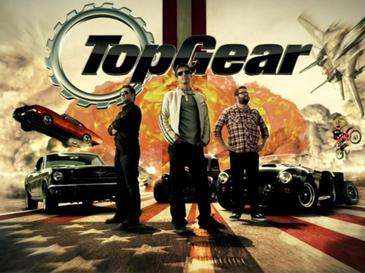With the advent of a U.S.-market spin-off reboot, creatively (sarcasm) called Top Gear America -featuring hosts of all of the Americas, provided that they come from just the U.S.- I decided to revisit its predecessor, Top Gear USA.

Top Gear USA was the inevitable North-American spin-off of the Top Gear franchise. After all, there have been other spin-offs for Australia, Russia, and South Korea. The three hosts were comedian Adam Ferrara, car-guy Rutledge Wood and racecar driver Tanner Faust. Initially following the same format of the franchise with a studio, test track, Star in a Reasonably Priced Car, The Stig, etc., the show later on focused solely on challenges, with whoever winning said challenges usually getting to test the cream of the crop of the car world… most likely in another challenge.
Initially the show was subpar. Many complained that the roles of hosts were miscast. I didn’t look at the show with kind eyes, as it felt unoriginal in the sense that they kept ripping off every single challenge from the original Top Gear. It also got really tiresome having to see Tanner win challenges so often, because racecar driver. Thankfully, like the chemistry between the trio, the show got gradually better, but I wasn’t going to shed tears if it was cancelled. I am surprised that it lasted 6 seasons. BTW, if you ask why I watched the show even though I didn’t love it, well, we’ve all done it, right? Overall, I found the series passable. Besides, the episodes go quickly.
The cars featured in this article are, in my opinion, those that best represent the show -as well as a few personal favorites- but are just some of the many more that were featured in the show. If you have a favorite machine that wasn’t included, go ahead and mention it in the comments section at the end of the post.



